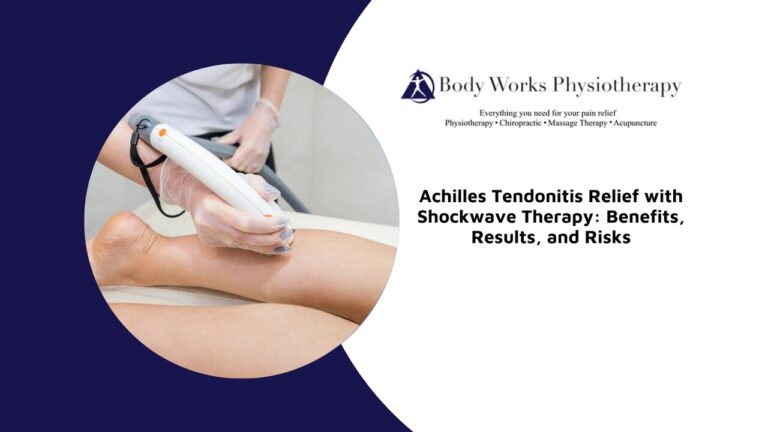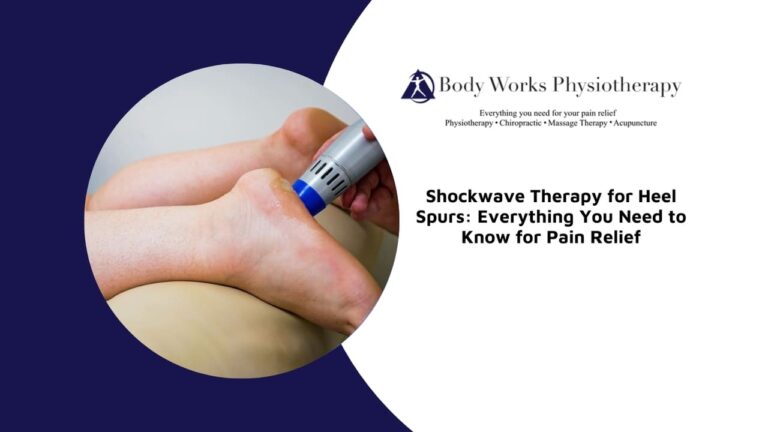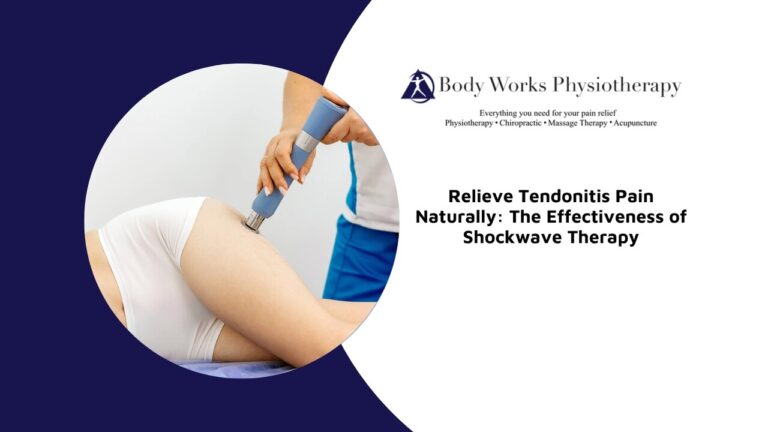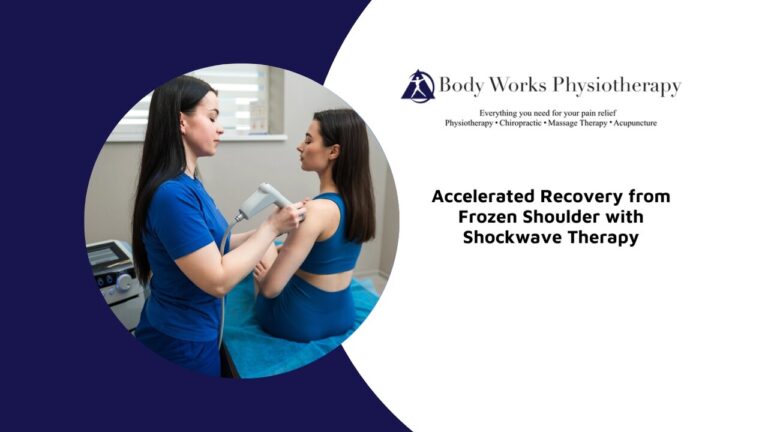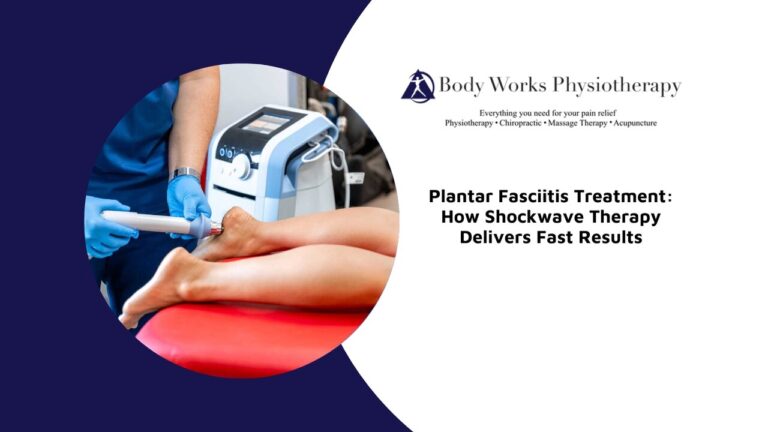
Knee pain can be a frustrating and limiting condition, especially when it becomes chronic or doesn’t respond well to rest and standard treatments. For those looking for non-surgical, evidence-based options, shockwave therapy offers a promising solution for knee pain. In this blog, we’ll explore what shockwave therapy is, how it works for knee pain, which conditions it can treat, and what to expect throughout the process.
Shockwave Therapy for Knee Pain Explained
Shockwave therapy is a non-invasive treatment that uses high-energy acoustic waves to stimulate healing in damaged tissues. It has gained popularity for treating various musculoskeletal conditions, especially chronic pain in the knee.
For individuals struggling with knee pain, shockwave therapy offers a way to promote circulation, reduce inflammation, and accelerate tissue regeneration. It works by sending controlled pulses into the affected area, which helps break down calcifications, stimulate collagen production, and trigger the body’s natural healing mechanisms. Over time, this process can relieve pain, improve joint mobility, and restore functional movement—without the need for medication or surgery.
By directly targeting the source of pain and dysfunction, shockwave therapy offers both symptom relief and a path toward long-term recovery.
Common Knee Conditions That Can Be Treated With Shockwave Therapy
Knee pain can result from a wide range of injuries or conditions—many of which respond well to shockwave therapy. This modality is especially effective for chronic or stubborn cases that haven’t improved with rest or traditional rehabilitation.
- Patellar Tendinopathy (Jumper’s Knee): Common among athletes and active individuals, this condition involves inflammation of the patellar tendon, often due to repetitive strain or overuse.
- Osteoarthritis of the Knee: Shockwave therapy can help reduce pain and stiffness by improving circulation and stimulating joint repair in degenerative conditions like knee osteoarthritis.
- Bursitis: Inflammation of the knee bursae—small fluid-filled sacs—can cause sharp pain and swelling. Shockwave can reduce inflammation and promote fluid drainage.
- Iliotibial (IT) Band Syndrome: This condition causes pain on the outer knee and is often linked to tight connective tissue. Shockwave therapy can loosen the IT band and reduce irritation.
- Chronic Knee Pain and Soft Tissue Injuries: Whether from a sports injury or long-term wear and tear, persistent pain related to tendons, ligaments, or cartilage may respond well to this treatment.
- Post-Surgical or Post-Traumatic Healing Support: In some cases, shockwave therapy is used to support tissue repair after surgery or injury by stimulating regeneration and reducing scar tissue formation.
With its wide scope of application, shockwave therapy offers relief for many knee-related problems and supports more complete rehabilitation.
How Effective Is Shockwave Therapy for Chronic Knee Pain?
Chronic knee pain often resists conventional treatments, leaving people frustrated and limited in their daily activities. Shockwave therapy provides a promising solution for long-term improvement.
Studies have consistently shown that shockwave therapy is highly effective in reducing chronic knee pain. Many individuals experience reduced pain, improved range of motion, and increased function within a few sessions. It’s especially helpful for people who haven’t responded well to physiotherapy alone or are looking to avoid medication and surgery.
The ability to stimulate cellular repair and reduce pain at the source makes shockwave therapy a powerful option for managing ongoing knee issues.
What to Expect During a Shockwave Therapy Session for Knee Pain
Understanding what happens during a session can help reduce any apprehension and make the experience more comfortable.
- Preparation: A gel is applied to the skin over the knee. This helps the acoustic waves travel efficiently through the tissue.
- Application: The therapist uses a handheld device to deliver controlled pulses to the affected area. These waves penetrate the tissue, stimulating repair and breaking down damaged tissue.
- Sensation: People often describe the sensation as mild tapping or pulsing. Some discomfort may occur, especially if the area is particularly sensitive, but it is generally well-tolerated.
- Duration: Sessions usually last between 10 to 20 minutes, depending on the size and severity of the issue.
- Aftercare: There is no downtime after treatment, though you may feel mild soreness for a day or two. Most people can return to their normal routine immediately.
Each session is quick, targeted, and designed to promote healing without the burden of invasive procedures.
How Many Sessions of Shockwave Therapy Are Required for Knee Treatment?
The frequency and duration of treatment depend on your condition’s severity, how long you’ve had symptoms, and how your body responds.
- Mild to Moderate Conditions: 3–4 sessions, spaced one to two weeks apart, are often sufficient for noticeable improvement.
- Chronic or Complex Conditions: 5–6 sessions may be needed, particularly if the knee pain has been persistent or resistant to other forms of treatment.
- Ongoing Evaluation: Your therapist will track your progress and may adjust the treatment plan based on how your body is responding. Follow-up care or complementary therapies like physiotherapy may also be recommended.
A consistent and personalized plan ensures the best outcomes over the course of treatment.
Possible Risks or Side Effects of Using Shockwave Therapy for the Knee
Shockwave therapy is considered very safe when performed by a trained professional. Side effects are typically mild and short-lived.
- Redness or Swelling: Mild irritation around the treatment area can occur but usually fades within 24–48 hours.
- Temporary Discomfort: Some people report soreness similar to post-exercise stiffness, especially after the first session.
- Bruising or Sensitivity: In rare cases, bruising may occur if the tissue is particularly inflamed or tender.
- Contraindications: Shockwave therapy is not suitable for individuals with blood clotting disorders, active infections, or metal implants near the treatment area.
With proper screening and professional oversight, shockwave therapy remains one of the safest non-invasive treatments for knee pain.
Addressing Knee Pain: Comparing Shockwave Therapy to Other Treatments
When deciding on a treatment approach, it’s helpful to understand how shockwave therapy compares to other common options.
- Medications: Pain relievers and anti-inflammatories can mask symptoms but don’t resolve the underlying problem.
- Surgery: While sometimes necessary, surgery carries risks, recovery time, and higher costs. Shockwave offers a non-surgical path to relief.
- Physiotherapy: Physiotherapy focuses on strengthening, mobility, and postural correction. Shockwave therapy complements this by directly stimulating tissue repair.
- Injections: Corticosteroids may offer temporary relief but can weaken tissues over time if overused.
Shockwave therapy offers a targeted, evidence-based option that bridges the gap between conservative care and invasive procedures. For many people, it becomes a key part of a comprehensive plan to overcome knee pain and restore movement.
Don’t Let Pain Be Your Reality
If knee pain has been interfering with your ability to stay active, work comfortably, or enjoy daily life, it may be time to consider shockwave therapy as part of your recovery plan. This non-invasive approach not only addresses the symptoms but also stimulates long-term healing at the source of the pain. Whether you’re dealing with a chronic condition or a lingering injury, shockwave therapy can support your journey back to strength, mobility, and confidence. To learn if this treatment is right for your needs, book a session with the team at Body Works Physiotherapy in Scarborough and schedule a consultation with our experienced team.


